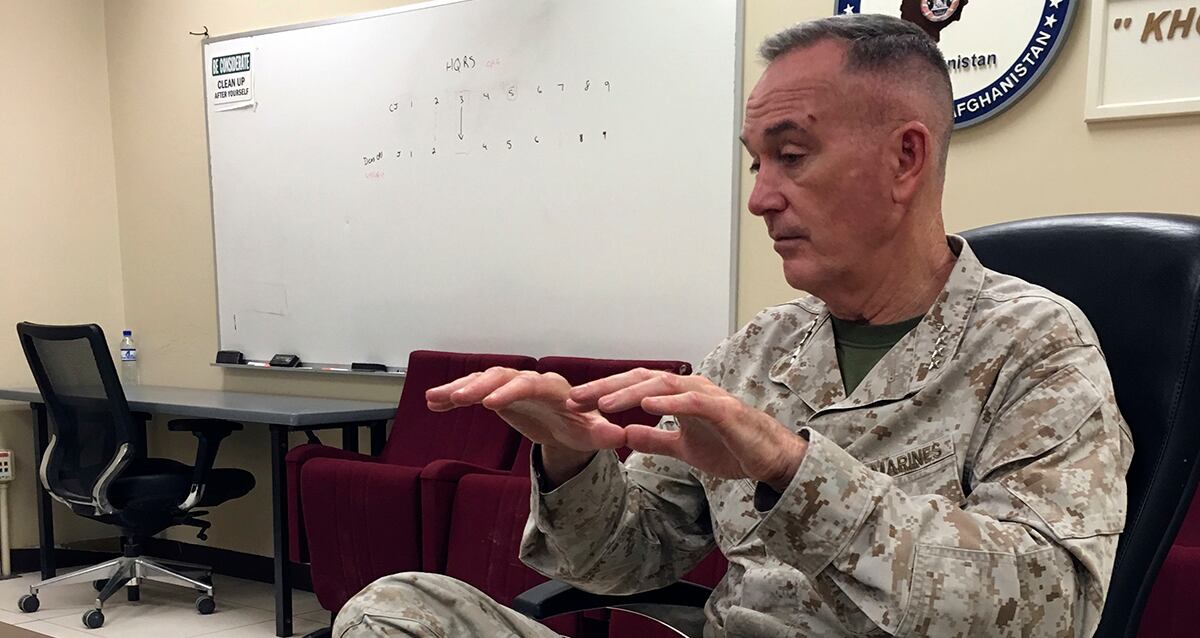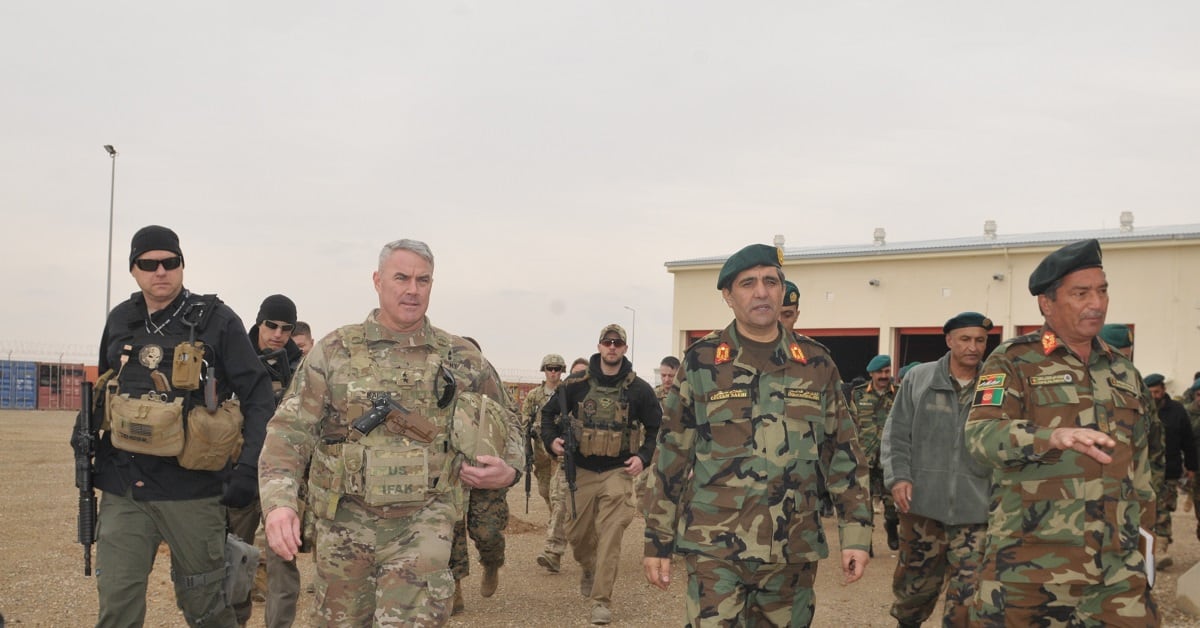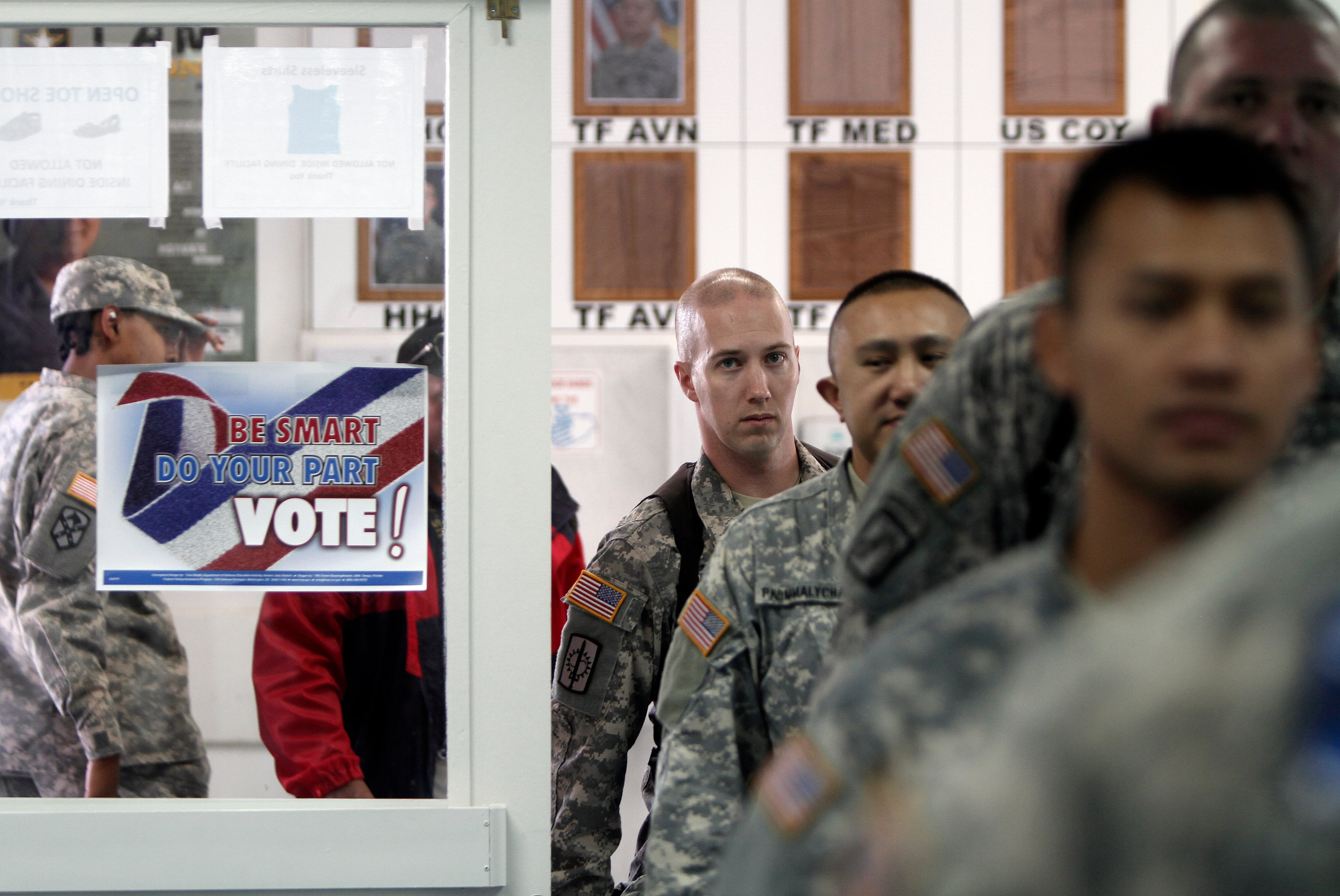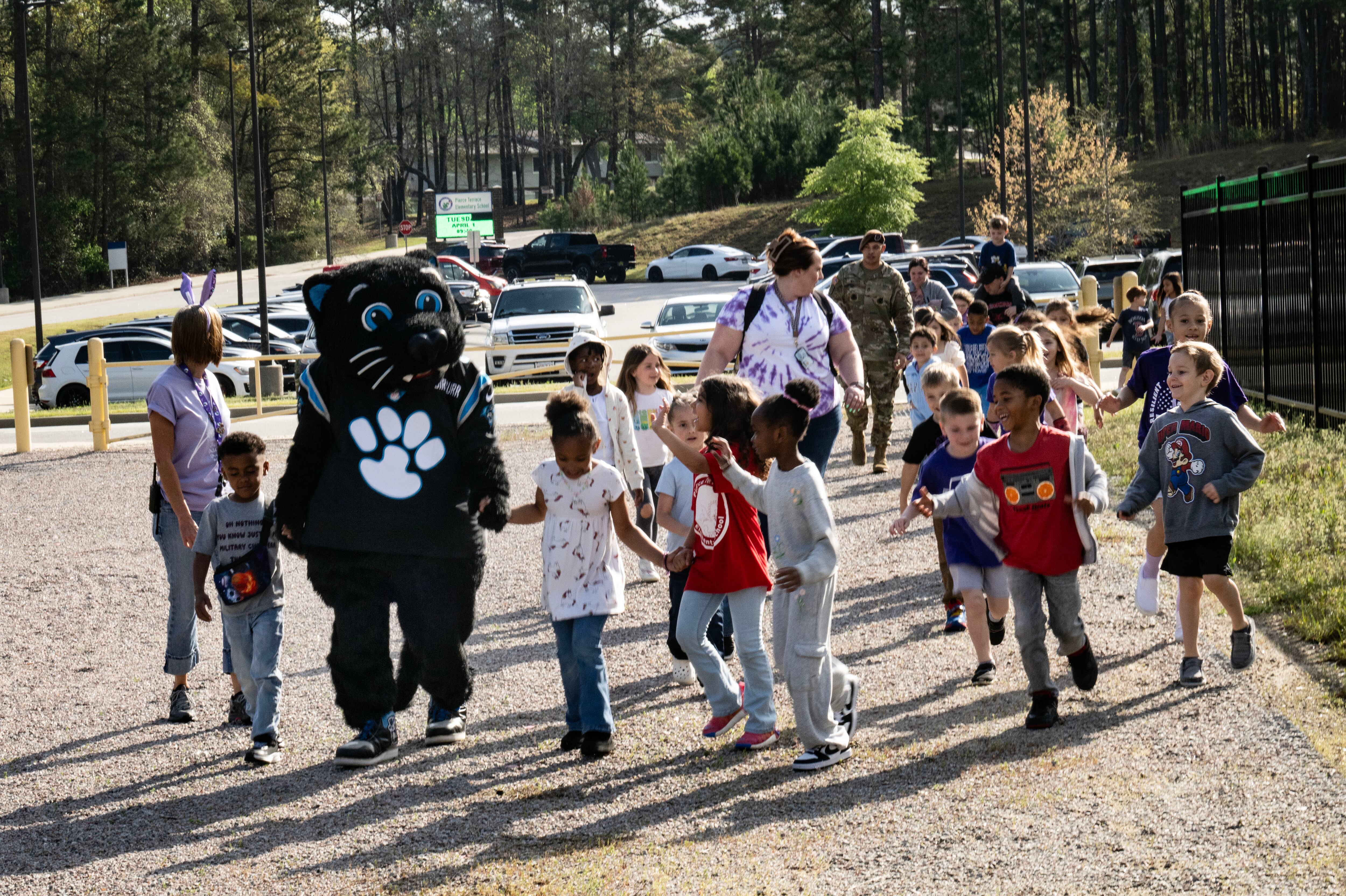TACTICAL BASE GAMBERI, Afghanistan — In fits and starts, for nearly a decade, the U.S. has talked about and struggled to make progress on building an Afghan military that can take control of its own nation’s security and lay the groundwork for a stable government.
This time, they think they have it right.
After five days criss-crossing Afghanistan, meeting with everyone from the Afghan president to the new American trainers on the ground, Gen. Joseph Dunford headed home Friday with a palpable sense of optimism.
Just months after the top U.S. commander in Afghanistan declared the war against the Taliban and other insurgents a stalemate, Dunford — chairman of the Joint Chiefs of Staff — said he can see the makings of a shift.

“What we’re already starting to see is, I think, momentum is going to favor the Afghan forces,” Dunford told the small group of reporters traveling with him, adding that the deployment of 800 new Army trainers “will serve as an accelerant to the Afghans being able to achieve momentum.”
One thing that gave him hope was a recent Afghan military operation in the east, where the Taliban have long been strong. It delivered, in his words, a “eureka” moment.
Dubbed Saleb 1-23, the Afghan military operation was launched in mid-February in a move to oust the Taliban from a critical 10-kilometer stretch of valley in Laghman Province. Taliban fighters have used that area as a transit route across the border with Pakistan, where they enjoy safe havens.
RELATED

U.S. Army Maj. Marc Pfrogner, the operations adviser for the Afghans’ 201st Corps, said the complex mission took 50 days to plan. He said it lasted until March 9, and got fiercer as the Afghans moved up Sangar Valley. Four Afghan forces died in the fight, and 30 Taliban were killed.
But what impressed the Americans was the coordinated battle the Afghans waged, using their own intelligence, gathered in part from the Scan Eagle drone they got last September.
With guidance from their American advisers, Afghan commandos launched the initial assaults, supported by Afghan aircraft. The Afghan National Army forces followed, clearing the area, and National Police units moved in to hold the ground, enabling local political leaders to retake the government.
U.S. surveillance and strike aircraft provided support, but American military commanders said much of that was invisible to the local people, who saw the Afghan forces as their liberators.
The coordination between the intelligence collection, the fighting forces and the police, said Dunford, is what the U.S. has been waiting to see.
“If you want to talk about what right looks like — from the Afghan security force and the government rolling in behind it — that operation was about textbook,” said Dunford. “I’m trying to restrain my enthusiasm here, but I’m having trouble, because that is the most positive observation that I’ve had over the last two days. You’re kinda like, eureka!”
Tempering that optimism, however, are the steep challenges ahead — from government corruption and political infighting to regional diplomatic tensions and struggles to build a consistent, enduring military. Too often in recent years, U.S. officials have seized on a glimmer of hope, only to watch the Taliban regroup and surge again, taking back territory and fueling its fight with the profitable poppy harvest.
That is all compounded by the persistent turmoil with Pakistan, which U.S. officials complain has still not done enough to eliminate Taliban safe havens and control the traffic of militants back and forth across the border.
Military leaders and commanders know well the risks of a backslide, so the next several months will be critical as they watch for the progress they believe is possible. And they know that success will depend on more than battlefield victories.
“The military effort is necessary but not sufficient to get us to reconciliation,” said Gen. John Nicholson, the top U.S. commander in Afghanistan, referring to the renewed campaign to get Taliban fighters to the peace table. “There’s a significant political component and diplomatic component.”
He and others agree, however, that battlefield wins are key ways to pressure insurgents to surrender. And he said the influx in recent months of several thousand U.S. troops and trainers, additional strike aircraft and drones is helping the Afghans go on the offensive.
Other U.S. commanders said the renewed American commitment to the war, driven by the strategy rolled out by President Donald Trump last August, has helped embolden Afghan forces.
Down at Camp Leatherneck in the Taliban heartland of Helmand Province, Marines said the Afghan soldiers still struggle with logistics and maintenance issues, but they are seeing some progress.
“It’s different now because they understand now it’s their responsibility,” said Marine Lt. Col. Ryan Benson, an adviser for the Afghan army. “Before there was the understanding that they were in the lead, but there was always that crutch” of coalition forces they could fall back on.
As the summer fighting season looms, Dunford said he will gauge success based on specific benchmarks. He said he wants the number of Afghan casualties to go down, and the percentage of the population living in secure, government controlled areas to go up. Currently, he said, about 68 percent of the population is living in secure areas, and the goal is 80 percent.
He also wants to see more Taliban abandon the fight and ease back into society through a formal Afghan reintegration program. And he said he’ll be watching the Taliban’s reaction when fighters increasingly see they’re being targeted by Afghan aircraft and the number of Afghan commandos — who have been their toughest enemy — has doubled.
“This is not another year of the same thing we’ve been doing for 17 years,” Dunford said. “All of this should bring pressure to bear on the Taliban. ... They are not going to win on the battlefield, they have to be convinced of that.”




